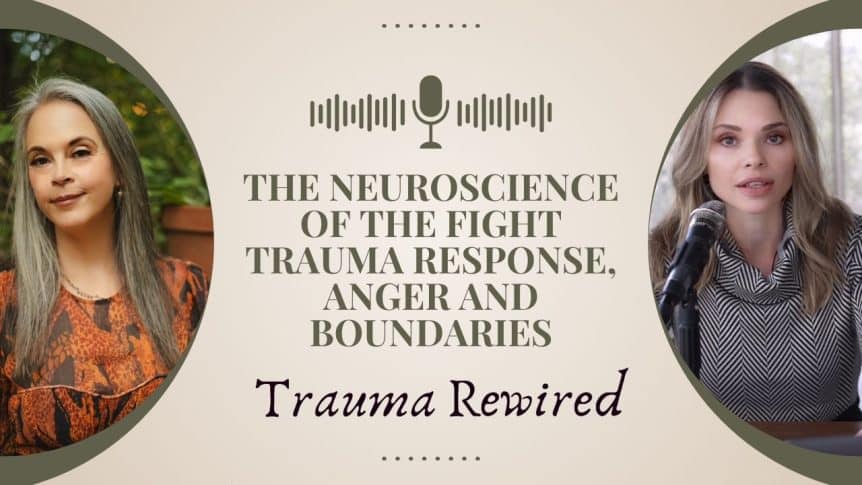
Ready to break free from burnout and self-sabotage?Join The Capacity Gap Workshop, register FREE at https://rewirecapacity.com
The fight response is often misunderstood as a personality flaw, but it’s actually a deeply wired survival adaptation shaped by past experiences and trauma. In this episode of Trauma Rewired, we explore the difference between healthy, time-bound anger and the chronic fight state, how they’re created in the brain and body, and why learning to process anger is essential for emotional safety and healthy connection.
You’ll learn how the amygdala, hypothalamus, periaqueductal gray, insular cortex, and prefrontal cortex interact during a fight response, and how trauma can train the brain to see threat everywhere. We break down the health consequences of chronic fight, the relational patterns it creates, and why suppression of anger doesn’t make it go away — it stores it in the body.
From personal stories to neuroscience, this conversation offers tools to recognize the signals of fight mode, regulate your state, and reclaim anger as a clarifying force for setting boundaries and protecting what matters — without living in constant defense mode.
Timestamps
00:00 – Why Anger Matters and the Cost of Suppression 04:06 – Honoring Anger and Boundaries 06:06 – How Chronic Fight Shows Up in Life 09:45 – Early Conditioning and Nervous System Patterns 13:00 – Trauma, Parentification, and the Fight Response 15:43 – Impact on Relationships and Work 21:21 – The Neuroscience of the Fight Response 31:41 – Physical and Health Effects of Chronic Fight 39:28 – Anger vs. Chronic Fight: Key Differences 42:09 – Processing Anger Safely 49:36 – Boundaries, Regulation, and Aligned Action 53:38 – Final Takeaway: Fight as Pattern, Anger as Compass
Topics Discussed in This Episode:
- The difference between healthy anger and the chronic fight response
- How trauma conditions the nervous system for constant defense
- The role of the amygdala, hypothalamus, PAG, insula, and PFC in fight mode
- How suppression of anger impacts physical and mental health
- Chronic fight patterns in relationships and work
- Tools for processing anger safely
- Why anger can be a clarifying force for boundaries
- Rewiring fight mode through neuroplasticity and somatic tools
- How parentification and early childhood experiences shape fight response
- The health consequences of chronic sympathetic activation
🔗 Resources:
🎯 Start Here
Ready to break free from burnout and self-sabotage? Join The Capacity Gap Workshop, register FREE at https://rewirecapacity.com
FREE 2-week nervous system training: https://www.rewiretrial.com
Learn more about Neurosomatic Intelligence Coaching: https://www.neurosomaticintelligence.com
📺 Watch More Trauma Rewired Episodes
YouTube Channel: https://www.youtube.com/@TraumaRewired
Apple Podcasts for Transcript: https://podcasts.apple.com/us/podcast/the-neuroscience-of-the-fight-trauma/id1537602643?i=1000722367710
🤝 Connect with Us
Instagram: https://www.instagram.com/trauma.rewired
Facebook Group: https://www.facebook.com/groups/761101225132846
🌱 Exclusive Offer
FREE 1 Year Supply of Vitamin D + 5 Travel Packs from Athletic Greens: https://www.drinkag1.com/rewired
This episode was produced by ClipGrowth – Podcast Video Editing, SEO & YouTube Strategy https://ClipGrowthAgency.com